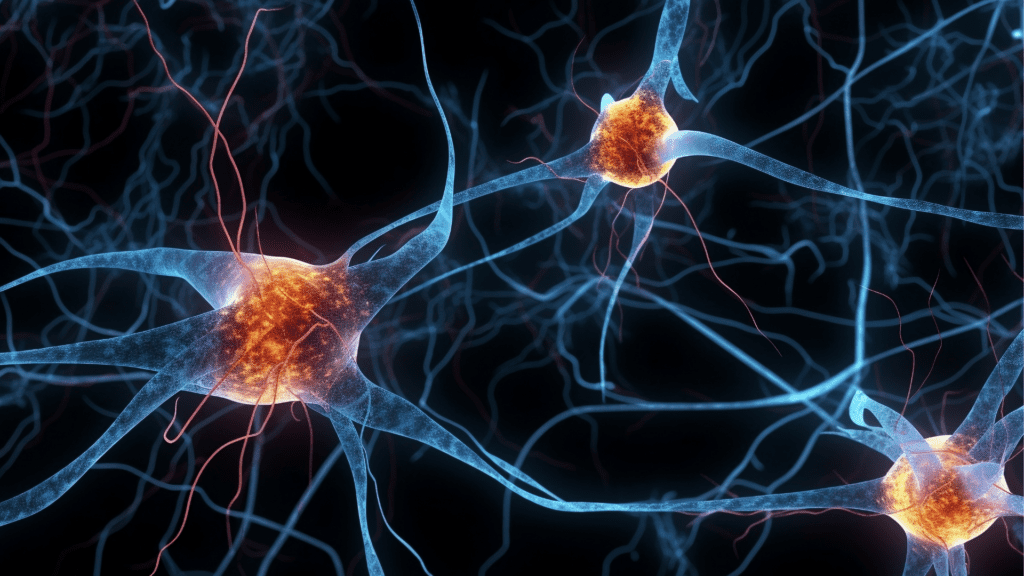Unmasking the Hidden Forces Behind Insecurity
Insecurity is a universal human experience that can profoundly impact our lives, relationships, and overall well-being. It gnaws at our self-esteem, fuels our fears, and often leaves us feeling paralyzed in the face of opportunities. But what if insecurity isn’t just a psychological quirk? What if it’s deeply rooted in the very wiring of our brains?
Recent advances in the neuroscience of insecurity have shed light on the intricate biological mechanisms underlying this complex emotional state. By understanding the brain’s role in insecurity, we can gain valuable insights into its origins and develop more effective strategies for building confidence and resilience.
What is Insecurity and Where Does It Come From?
Insecurity is a feeling of uncertainty or anxiety about oneself, characterized by a lack of confidence and self-assurance. It often manifests as self-doubt, fear of rejection, and a pervasive sense of inadequacy. But where does this feeling come from, and why do we experience it?
Origins of Insecurity
Insecurity can stem from various sources, including:
- Early Life Experiences: Negative experiences during childhood, such as criticism, neglect, or trauma, can shape our self-perception and lead to long-lasting feelings of insecurity. For example, children who grow up with overly critical parents may internalize these criticisms, leading to a pervasive sense of inadequacy and fear of failure.
- Social Comparisons: Constantly comparing ourselves to others, especially in the age of social media, can exacerbate feelings of inadequacy and self-doubt. Seeing others’ curated successes can make our own achievements seem insignificant by comparison, fueling insecurity.
- Attachment Styles: Our early relationships with caregivers can influence our attachment style, which in turn affects our sense of security in relationships. Insecure attachment styles, such as anxious or avoidant attachment, can contribute to chronic feelings of insecurity. For instance, a lack of secure attachment in childhood can lead to difficulties in trusting others and managing emotions effectively.
- Cultural and Societal Pressures: Societal expectations and cultural norms can impose unrealistic standards, leading to feelings of inadequacy when we fail to meet them. For example, cultures that emphasize material success and physical appearance can make individuals feel insecure if they do not meet these societal standards.
Why We Feel Insecure
Insecurity is deeply rooted in our brain’s wiring and evolutionary history. From a survival perspective, being attuned to potential threats and social rejection was crucial for our ancestors. The brain’s mechanisms for detecting and responding to threats have evolved to keep us safe, but in the modern world, these same mechanisms can contribute to feelings of insecurity.
- Evolutionary Perspective: Insecurity can be traced back to our evolutionary past, where social standing and acceptance were critical for survival. Being part of a group provided protection and resources, so the fear of rejection or social exclusion was a significant threat. This evolutionary background helps explain why social rejection and failure can trigger intense feelings of insecurity.
- Psychological Factors: Perfectionism and sensitivity to criticism are personality traits that can contribute to insecurity. Perfectionists set unrealistically high standards for themselves and feel inadequate when they fail to meet these expectations. Similarly, individuals who are highly sensitive to criticism may internalize negative feedback, leading to chronic self-doubt and insecurity.
The Neurobiology of Insecurity: Key Brain Structures
At the heart of our experience of insecurity lies a complex interplay of brain structures and neural circuits. Two key players in this neurobiological drama are the amygdala and the hippocampus.
The Amygdala: Your Brain’s Emotional Sentinel
The amygdala, an almond-shaped structure deep within the brain’s temporal lobes, plays a crucial role in processing emotions, particularly fear and anxiety. When we feel insecure, the amygdala becomes hyperactive, triggering a cascade of physiological responses that prepare us for potential threats.Research in the neuroscience of insecurity has shown that individuals with higher levels of attachment anxiety and avoidance – two key dimensions of insecure attachment – tend to exhibit increased amygdala activation in response to social stimuli. This heightened amygdala reactivity may explain why insecure individuals are more prone to perceiving social situations as threatening or rejecting.
The Hippocampus: Keeper of Emotional Memories
Another brain structure intimately involved in the experience of insecurity is the hippocampus. This seahorse-shaped region plays a vital role in memory formation and consolidation, particularly for emotional experiences. Studies have found that individuals with insecure attachment styles often have reduced hippocampal volume.
This reduction in hippocampal volume may impair the ability to form and retrieve positive emotional memories, contributing to a negative self-image and increased vulnerability to stress. The hippocampus also plays a crucial role in regulating the stress response, and its reduced function in insecure individuals may lead to difficulties in managing anxiety and self-doubt.

Neuroplasticity: The Brain’s Capacity for Change
One of the most exciting discoveries in the neuroscience of insecurity is the brain’s remarkable ability to change and adapt throughout our lives – a phenomenon known as neuroplasticity. This offers hope for individuals struggling with insecurity, as it suggests that we can rewire our brains to develop more secure attachment patterns and a more positive self-image.
Harnessing Neuroplasticity to Build Confidence
Understanding neuroplasticity allows us to develop innovative strategies that leverage the brain’s natural ability to change and adapt. Here are some advanced, neuroscience-based approaches to building confidence and emotional resilience:
Leveraging Hebbian Plasticity: “Neurons that Fire Together, Wire Together”
The principle of Hebbian plasticity, often summarized as “neurons that fire together, wire together,” is fundamental to understanding how our experiences shape our brain. By repeatedly engaging in positive, confidence-building activities, we can strengthen the neural pathways associated with these behaviors. This process involves:
- Consistent Positive Reinforcement: Regularly engaging in activities that promote self-confidence can help reinforce the neural circuits associated with positive self-perception. For example, setting and achieving small, manageable goals can create a feedback loop that strengthens confidence over time.
- Visualization Techniques: Visualization can be a powerful tool for leveraging Hebbian plasticity. By vividly imagining successful outcomes and positive experiences, individuals can activate and strengthen the neural pathways associated with these scenarios, making them more likely to occur in real life.

Neuroplasticity-Based Life Coaching
Neuroscience-based life coaching focuses on harnessing the brain’s ability to adapt and change. This approach involves:
- Goal-Oriented Neuroplasticity: Setting specific, achievable goals and working towards them can help create new neural pathways that support confidence and resilience. Coaches can guide individuals in identifying and pursuing goals that align with their strengths and values.
- Adaptive Learning: Encouraging a growth mindset, where challenges are viewed as opportunities for learning and growth, can help rewire the brain to be more resilient in the face of adversity. This involves actively seeking out new experiences and learning opportunities that challenge existing neural patterns and promote adaptive changes.
Harnessing Structural and Functional Plasticity
Structural plasticity refers to the brain’s ability to change its physical structure in response to learning and experience, while functional plasticity involves the brain’s ability to move functions from damaged areas to undamaged ones. Strategies to harness these forms of plasticity include:
- Skill Acquisition and Mastery: Learning new skills and mastering them can lead to significant changes in brain structure and function. Engaging in activities that require practice and repetition, such as playing a musical instrument or learning a new language, can strengthen neural connections and enhance cognitive flexibility.
- Environmental Enrichment: Creating an environment rich in stimuli and opportunities for learning can promote neuroplasticity. This might involve engaging in diverse activities, exploring new hobbies, and maintaining a stimulating social environment.
Interpersonal Neurobiology
Interpersonal neurobiology explores how relationships and social interactions shape the brain. Strategies based on this field include:
- Empathy and Emotional Resonance: Engaging in empathetic interactions and building emotional resonance with others can strengthen neural circuits associated with social bonding and emotional regulation. This can involve practices such as active listening, expressing genuine interest in others, and participating in supportive social networks.
- Collaborative Problem-Solving: Working with others to solve problems and achieve common goals can enhance neural connectivity and promote a sense of security and belonging. Collaborative activities can range from team sports to group projects and community service.
Neurogenesis and Brain Health
Neurogenesis, the process of generating new neurons, plays a crucial role in maintaining brain health and cognitive function. Strategies to promote neurogenesis include:
- Nutritional Support: Consuming a diet rich in nutrients that support brain health, such as omega-3 fatty acids, antioxidants, and vitamins, can promote neurogenesis and overall cognitive function.
- Sleep Optimization: Ensuring adequate and quality sleep is essential for neurogenesis and brain health. Establishing a regular sleep routine, creating a restful sleep environment, and managing stress can help optimize sleep patterns and support brain function.
Embracing Neuroscience for Personal Growth
Understanding the neuroscience of insecurity offers us a powerful new perspective on this common human experience. By recognizing the brain’s role in shaping our self-perception and emotional responses, we can approach personal growth with greater compassion and insight.Remember that your brain is constantly changing and adapting. With consistent effort and the right strategies, you can rewire your neural circuits to foster greater security, confidence, and emotional well-being. Embrace the principles of neuroplasticity, and let them guide you on your journey towards a more secure and fulfilling life.





